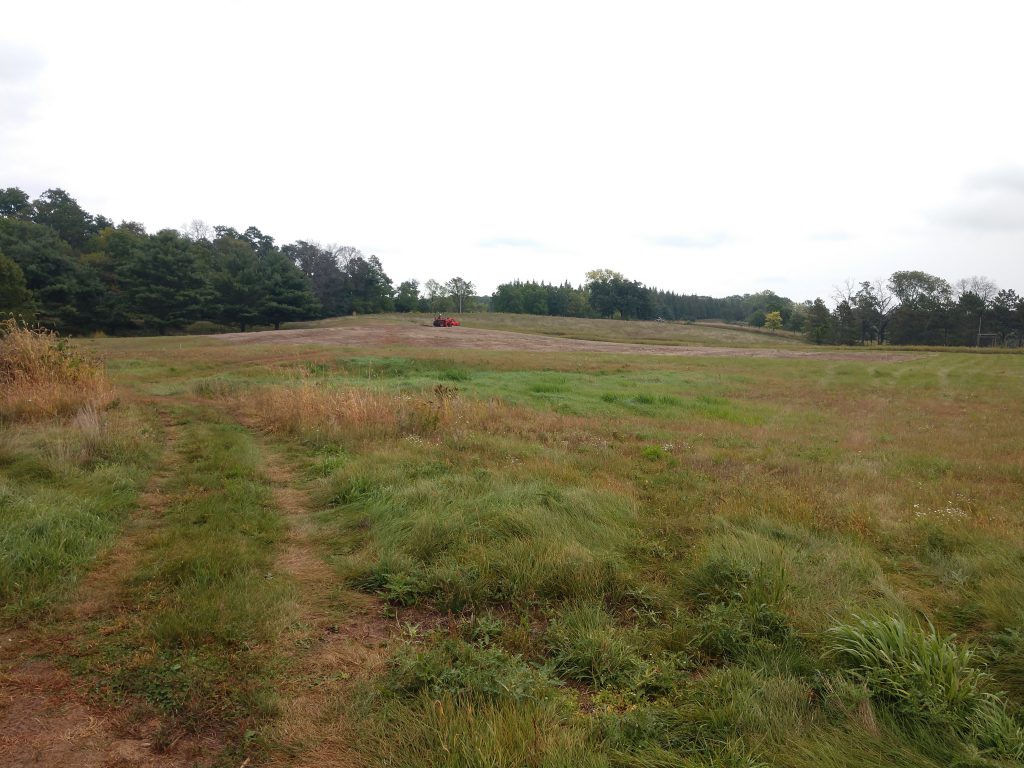It was hard to know how to handle the second treatment that was needed in early August. The vegetation was much thinner, but we had about 3/4 acre that was still somewhat green, our sprayer pump was broken and we needed to get better coverage than on the first round. Buy a tank and sprayer? Buy a spray rig? Have someone come and spray? Our 20-year-old sprayer pump on a 5 gallon tank should just have been replaced – but it was frustrating that the failure was a plastic diaphragm the size of a contact lens that would cost $2 if you could order it somewhere. None of the options costing hundreds of dollars would give a better result than simply replacing the pressure switch diaphragm in what we had. Attempt #1 with a bit of cottage cheese container lid failed – not sure if it was too stiff, or if pressure was building up between the failed membrane with a tiny hole and the new overlay. Try #2 with a bit of rubber fish pond liner, and punching a large hole in the damaged membrane, was totally successful. Back in business!
Round 1 with the battery-powered sprayer in the tractor bucket, spraying while driving, was a bust. Too much mixing, too hard to control, and the battery went dead. For round 2, Mona and I loaded lots of water (100 gallons in buckets and a barrel) and the necessary chemicals into the utility trailer, with the sprayer and a small generator to continuously charge the sprayer battery. Then we pulled the entire circus out to the plot with the pickup – let the battle begin. We got over half done in a couple hours. One mixed and kept the sprayer going, while the other sprayed anything green, and moved the truck from time to time. Then we ran out of dye. We found it impossible to continue without being able to see what was already done. But we knew what to do now. Round 3 the next day was relatively painless and with the two us on it, the job was done quickly. After a couple weeks, we got the result seen below. The pollinator plot on the hill (with the tractor in it) is rather brown, now.

Some part of me (Ted) asks if we’re just removing one set of weeds to plant another set of weeds. There were plenty of wildflowers in that area already. That may be the case, but the amount of work needed to control the invasive plants in the area was more than we could ever do while preserving the other flowering plants that were there. And I’m assured that the seed mix we’ll plant this winter will be well suited to the conditions here, and will provide high quality plants for pollinators all season long.
Next: Mop Up